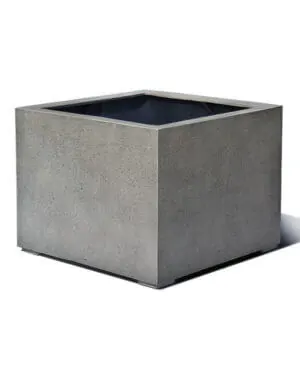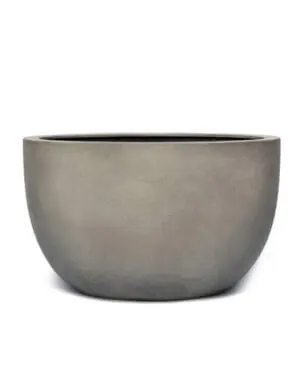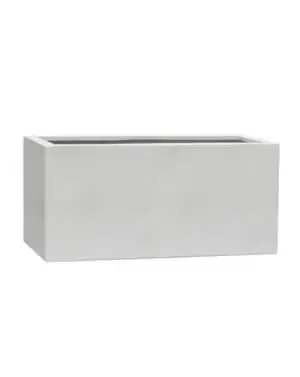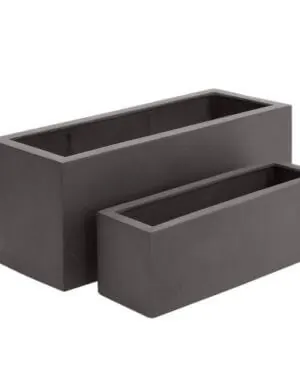When it comes to landscape design, one of the most important considerations is choosing the right pots and planters. There are many factors to consider when making this decision, including the type of plants you are using, the size of the space you are working with, and your personal aesthetic. Here are a few tips to help you choose the right pots and planters for your next landscape design project.
- What should you consider when choosing pots and planters? Material, size, shape, placement, cost, and so on. What type of environment is it meant for? Is it recyclable? Is there any other environmental impact it may have?
- What irrigation and drainage strategies are available to you?
- Knowing what plants or foliage will be planted in your space is essential.
- Consider that the planter, as well as the plants, will both require general maintenance.
We’ll do a rundown of the factors you need to consider when choosing pots and planters for your project.
Placement
When choosing planters, the placement of the planters should be a major consideration. Will the planter be exposed to the elements? Is there a lot of foot traffic? Will it be positioned on soil, concrete, or perhaps a wooden deck? All these will affect your decision-making.
Planter Weight and Stability
Whether the planter will need to be moved periodically or remain stationary will affect your choice of material. If it needs to be portable, choose a planter made of lightweight material. Whatever you do, weight should always be considered.
- Florence Lightweight Concrete Low Square Planters
- Florence Low Round Lightweight Concrete Planters
Lightweight planters will eventually become heavy when filled with plants, soil, and water. Lightweight materials are better for elevated terraces or rooftops and if mobility is an important factor in the project. Heavier weight planters work best for focal points or places where planters don’t need to be moved around.
- Moscow GRC Ivory Trough
- Moscow GRC Charcoal Trough
Naturally, heavier planters provide more stability than lighter planters. However, a low base-to-height ratio planter can still offer good stability when considering its weight.
Shape, Size, and Volume
A planter’s weight, shape, size, and volume determine whether a planter will stay stable. The more stable the planter is, the happier your plants will be. In addition to their size and plant capacity, planters must have the ability to hold a lot of water.
Here are some important notes:
- Square pots offer the most stability.
- Pot shape and size are essential to consider when planting a succulent. For example, a smaller container may tip over more quickly than a larger pot.
Porosity
Depending on the material’s intended use, porous planter material will absorb or repel water. Porous materials are susceptible to damage from freezing water, so it is important to know if the material is porous before you purchase.
Unless properly glazed, terra-cotta planters will soak up water. Similarly, wire baskets lined with absorbent material and pots made of porous materials (such as cement) will also pick up water if they have cracks. Clay pots lined with plastic solve this issue by making the planter resistant to water loss.
Any type of planter needs protection in winter. After cleaning and drying thoroughly, cover the planter with a plastic rain protector or take steps to make sure it’s not upside-down so that water won’t collect and freeze inside.
Drainage
One of the most important features of a planter is that it allows water to drain freely so that the roots in the soil get enough air. Few plants can grow in stagnant water, and wet soil can lead to root rot. Proper drainage is necessary to maintain planters in cold areas since frozen water can build up inside them. Freezing water can lead to cracks in the side of the planter or cause it to collapse completely, which means your decorative plants would tumble out onto the floor. This is very inconvenient and expensive, not to mention challenging to recover from.
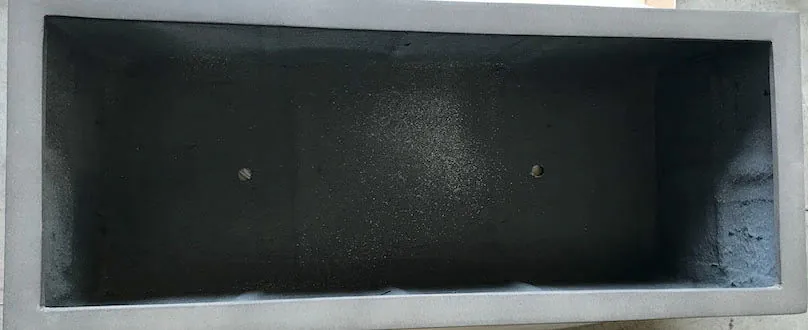
It’s essential to ensure the drainage holes in your planter won’t be plugged by soil or debris. You can usually achieve this by pouring a layer of geofabric at the bottom of the planter, then covering it with an absorbent material before adding potting mix.
Irrigation
You also need to consider how water will be provided to the planters. Will you rely on rainfall alone, or will an irrigation strategy need to be put in place?
Three main methods for irrigation:
- Hand or manual method
- Manual irrigation requires available labor and water.
- External irrigation system (drip or spray irrigation)
- Some people use drip or spray irrigation systems. These are generally used outdoors, so you must have a leak-free and adequately installed plumbing system before you place the planters. It’s also important to consider the tubing size needed for your project and how it will be installed. Make sure to get this conversation out of the way with the planter manufacturer beforehand because you don’t want to risk placing an order without all the necessary arrangements.
- Self-watering irrigation system
- A self-watering system is an excellent option for people unable to water their plants. These systems use the plant’s natural capillary action to draw water from a reservoir inside the plant container. Typically, the perforated tube protrudes through the surface of the soil and must be installed at the correct depth and fitted with a pot to work well. In outdoor applications, it may require some additional effort (monitoring rainfall levels) to keep reservoirs full of water.
Plant Type
Is the planter used for temporary displays of annuals, or is it a long-term display of perennials? When choosing a planter for annuals or plants with small roots, consider how much planting material is allowed per area on the planter. Generally, these plants do not have very many restrictions on the shape of the planter.
Environment Conditions
When selecting a planter, note your area’s climate and environmental factors. These might include the sun, wind, and freeze conditions.
Sun exposure or extreme heat can affect the longevity of your planter. If you’re experiencing too much sunlight, consider planters with UV-resistant materials. Certain materials, such as plastic, may not hold up in high temperatures, which can soften and sparks cracks from hot and cold fluctuations.
It’s important to consider the wind conditions when choosing a suitable planter. It can be challenging to get a light, narrow planter to stay upright when high winds are blowing in certain parts of town. Make sure the base is broader than your planter, so it doesn’t tip over – you don’t want your planter falling off a rooftop or balcony.
Alternatively, if you’re looking for more stability, you could choose square, rectangular, or cylindrical-shaped planters. Consult with a structural engineer before using heavy containers on balconies and rooftops because some types of weight may not be approved for this purpose.
Conclusion
With so many factors to consider when choosing pots and planters for your landscape design project, it can be tough to know where to start. But armed with this knowledge, you should be able to find the perfect pot or planter for your needs. Remember. Consider the material, size, weight, and shape of your planters as well as drainage and irrigation. Also, consider the environmental conditions since some planter types are not appropriate for certain weather conditions.



